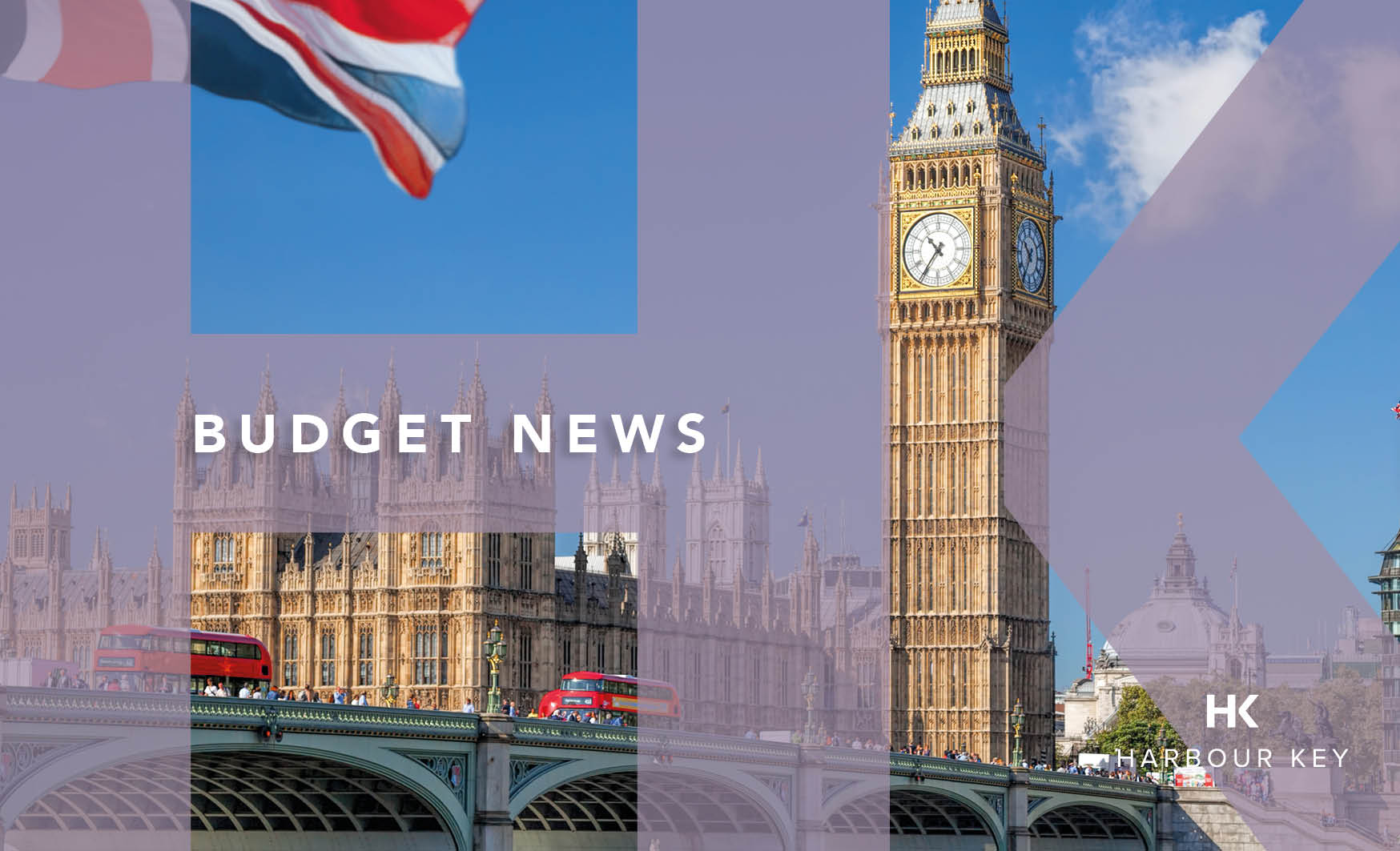 As the end of another tax year approaches, now is a good time to consider your financial position and check whether you have taken full advantage of the tax reliefs and exemptions that are available, as well as prepare for the new tax year. This checklist is intended to provide a brief guide to the opportunities that we believe may be worth considering. There are many tax-saving measures available and we detail below a number of steps that can be taken to improve your tax position, without significant effort. We have listed some planning points to consider which may help reduce your taxes for next year if implemented now. The impact of taxation is only one element in establishing your financial position – you should also be considering such issues as your savings, investments and succession planning. The following guide is not an exhaustive list of ideas. Always take professional advice when deciding your tax planning or investment strategy.
As the end of another tax year approaches, now is a good time to consider your financial position and check whether you have taken full advantage of the tax reliefs and exemptions that are available, as well as prepare for the new tax year. This checklist is intended to provide a brief guide to the opportunities that we believe may be worth considering. There are many tax-saving measures available and we detail below a number of steps that can be taken to improve your tax position, without significant effort. We have listed some planning points to consider which may help reduce your taxes for next year if implemented now. The impact of taxation is only one element in establishing your financial position – you should also be considering such issues as your savings, investments and succession planning. The following guide is not an exhaustive list of ideas. Always take professional advice when deciding your tax planning or investment strategy.
Income Tax Planning
Sharing income with spouse/civil partner
If you are married or in a registered civil partnership and have taxable income incurring tax at either 40% or 45%, significant savings can be made by diverting investment income into your partner’s name if they have no earnings or are a basic rate taxpayer. Diverting income and other measures set out below are particularly beneficial if your income is over £100,000 because the personal allowance is reduced by £1 for every £2 of net income over £100,000. For income between £100,001 and £123,000 the effective top rate of tax is 60%.
Business owners – utilise dividends and pension
If you are running your own company, you should consider drawing a combination of salary, dividends and pension contributions to limit the overall rate of tax, particularly with the reduction in dividend allowance from £5,000 to £2,000 from 6 April 2018.
If you have received funds by way of a loan from a close company of which you are a shareholder, the company will face a 32.5% tax charge if the loan is not repaid within nine months following the end of the company’s accounting period. Repaying the loan within the nine month period is simplest, but if it is repaid later, the tax charge that the company will have had to pay can be reclaimed. Funding the loan repayment by way of a dividend from the company is a common solution, as is repaying one loan but taking out a new one for a similar amount. However, since 20th March 2013, ‘bed and breakfast’ loans are not permitted and any new loan made by the company to a shareholder within 30 days is effectively treated as a continuation of the original loan. There are further anti-avoidance rules to catch situations where there is an intention to re-draw the loan outside of the 30-day limit. In addition if the loan is interest fee there is a benefit in kind charge, reportable via from P11D.
Married Couples Allowance
Marriage Allowance lets you transfer £1,550 of your Personal Allowance to your husband, wife or civil partner – if they earn more than you. This reduces their tax by up to £220 in the tax year (6 April to 5 April the next year). To benefit as a couple, you (as the lower earner) must have an income of £11,500 or less. You can get Marriage Allowance if all the following apply:
- you’re married or in a civil partnership
- your income is under £11,600
- your partner’s income is between £11,501 and £45,000
Tax efficient investments
Investment in businesses which qualify under Enterprise Investment Schemes (EIS), Seed Enterprise Investment Scheme (“SEIS”) or Venture Capital Trusts (”VCT”) can generate income tax relief, although you should take independent financial advice before investing. EIS provides income tax relief of 30% on investments of up to £1,000,000. SEIS provide 50% tax relief on investments of up to £100,000, whatever the individual’s tax rate. VCTs provide 30% income tax relief on investments up to £200,000 per annum and the dividends are tax free. EIS, SEIS and VCT investments are all free of capital gains tax provided the investment remains qualifying and is held for the required period of time
Maximise pension contributions
Pension contributions up to a certain limit are free from tax.From 6 April 2014, it is only possible to make a qualifying annual contribution up to a maximum of £40,000. It may be possible to bring forward any unused allowances from the previous three years. ‘Salary sacrifice’ (giving up salary or bonuses in return for pension contributions can also save National Insurance). Additional rate taxpayers are now significantly restricted, as from 6 April 2016 the tax relief they can claim on pension contributions is restricted by £1 for every £2 over £150,000 restricted to a maximum allowance of £10,000 (gross).
Tax on savings
A basic rate taxpayer is entitled to a £1,000 personal savings allowance and banks/building societies will no longer deduct tax at source so that the election will no longer be required. For higher taxpayers the allowance is £500, with additional rate taxpayers having no allowance. As with dividends, if a spouse is a low earner, it maybe worth considering diverting interest income.
Claim refunds of tax paid at source
Your spouse, civil partner or family dependant may inadvertently be paying tax on savings income or income from a trust even though their total income is below the tax threshold. Request and complete a tax refund claim form (R40) from HMRC for 2017/18.
Change Your Company Car
Every year the taxable benefit on company cars is increased by reducing the level of CO2 emissions that trigger an increase in car benefit. Over the next two tax years the increase will be 2% per year so for example a car with emissions of 180 gm/km has a benefit in kind of 35% of the list price of the car in 2017/18 which increases to 37% in 2018/19. You should review your company car situation as it is now rare for use of a company car to be tax-effective, unless low emission or electric.
Childcare
The way the Government subsidies childcare is changing, with the introduction of free childcare. Tax-Free Childcare gives eligible families up to £2,000 free per child towards childcare costs up to the age of 11 (16 if disabled). Launched in April 2017 for the youngest children it has now been rolled out to all ages. The historic employer Childcare Voucher scheme remains open to new joiners, but will be closed to new joiners after 5th April 2018. There are qualifying conditions and restrictions for tax free childcare and therefore signing up to vouchers before they are abolished could be an advantage. A review should be taken using the Government Childcare calculator at https://www.gov.uk/childcare-calculator
Check your PAYE coding notice
We reported previously on the number of PAYE coding notices that have been issued incorrectly and resulted in taxpayers receiving tax demands for underpayments. When you receive your coding notice (accountants/agents no longer receive copies), make sure it is correct. If not a quick call to HMRC can get your coding notice changed. Alternatively, let us have a copy of your Coding Notiice and we can review it.
Individual Savings Account (ISA’s)
Make the most of individual savings account (ISA) maximum annual contribution for the tax year 2017/18 of £20,000, (all of which can be put into a ‘cash ISA’ if preferred). This provides an income tax free return and gains are exempt from capital gains tax. In addition other tax favourable ISAs are:
- Junior ISA for children under 18 – maximum annual contribution £4,128
- Help to Buy ISA – Maximum contribution per year £3,000, with a Government matched top up of 25% to a maximum of £3,000.
- Lifetime ISA – From April 2017 maximum contribution per year £4,000
- 25% per annum Government top up.
- Midnight on 5th April is the deadline to transfer a Help to Buy ISA into a Lifetime ISA, without impacting the £4,000 annual allowance.
Shares no longer of any value
For all individuals the maximum relief that can be claimed against general income for losses and interest payments is capped at the higher of £50,000 and 25% of adjusted total income.
Look for losses and consider carefully the year in which they are claimed – losses on subscriber shares in EIS-qualified companies and certain other unquoted companies can be claimed against income tax and are not affected by the cap. If a loss has arisen but not yet been claimed, consider claiming the loss in a year when you are likely to be a higher rate or additional rate taxpayer.
Charitable donations
Provided that you pay income tax above the basic rate, you should be able to obtain income tax relief at your marginal rate for cash donations made under Gift Aid. Gift Aid relief is not affected by the £50,000 cap applied to certain other tax reliefs.
Landlords
With the first year of the phased in restriction for mortgage interest relief (25%), landlords should review the impact on their rental profits. For example, as with interest and dividends, can savings be made by diverting rental income into your partner’s name if they have no earnings or are a basic rate taxpayer. Alternatively, transferring to a company ownership structure, although there are pros and cons with this move.
Life assurance based investments
Whilst these products may allow a withdrawal of 5% tax free each year, on maturity or in the event of a full or partial early surrender the profits are subject to income tax. It may be possible to surrender these policies before 6 April 2018 so as to make full use of any surplus basic rate band that you have available. Please note that gains on some events are calculated by reference to the policy year rather than the tax year.
Investments with capital growth
If you are a 40%/45% income taxpayer with funds to invest, consider investments which generate capital growth taxed at 20% as opposed to income
Keeping your child benefit
Consider if there are any measures that can be taken to keep your annual taxable income below £50,000. Adopting some of the measures set out above such as making pension contributions or sacrificing salary/bonus in return for employer pension contributions can reduce your taxable income to keep it below the £50,000 threshold. It may also be possible to reallocate assets or trading profits between you to keep both partners below the threshold. If you or your partner’s taxable income exceeds £50,000, child benefit is clawed back. The claw-back (officially referred to as the high income child benefit charge) is at 1% of the benefit for every £100 of income over £50,000. Therefore, when income reaches £60,000, the financial benefit of the claim is lost. It is individual income, rather than family income, that is the key factor. If not claiming child benefit as you are a high earner, you could be impacting your right to claim a full state pension in the future (and possibly other benefits). For state pension you need 35 years’ worth of NIC credits or contributions and those without a full record can only claim a reduced pension. If you are a parent claiming child benefit for a child under 12, you’ll automatically get NI credits towards your state pension record if you don’t work, or don’t earn at least £5,824 per year. If you were claiming child benefit at the time means-testing was introduced in January 2013 and have since stopped claiming even though you’re still eligible, there won’t be any impact on your state pension entitlement, as under transitional rules you’ll continue to get NI credits. However, those who have had children after January 2013 need to register which can be done in two ways:
- Claim child benefit as normal, then your partner pays tax on it.
- Claim child benefit, but at a ‘zero rate’. You won’t actually receive any child benefit but you will get NI credits. To apply for this zero rate child benefit, tick a box on the child benefit application form.
Leaving the UK
Leaving the UK can be an effective way to save tax in the right circumstances, but it is vital to plan the departure date. For example, if you intend to be non-UK resident for 2019/2020, now is the time to start planning. To establish yourself as non-resident in the UK, you will need to meet the various requirements of the UK’s statutory residence test and may need to remain non-UK resident for five full tax years to mitigate certain UK taxes such as CGT. The requirements of the test vary according to your circumstances, so detailed planning is vital.
Non-UK domiciled individuals and remittances
If you are not domiciled in the UK, review your remittances for the 2017/18 tax year well before 5 April. There may be scope for further remittances to the UK or it may be appropriate to take remedial action to reduce future liabilities. For example, individuals who bring or transfer foreign funds to the UK to invest in certain qualifying companies have been able to do so without incurring UK tax charges regardless of the source of the funds remitted. Investments can either be by way of loans to or the acquisition of shares in an unconnected company. Those who are currently claiming to be non-UK domiciled, as of 6 April 2017 if you have lived in the UK for 15 years, you will automatically become UK domiciled for all UK taxes. Check your year count, so planning can be implemented to shelter offshore assets from UK tax before becoming UK domiciled.
Capital Gains Tax
Take less income to reduce your CGT rate
With the rate of CGT dependent on your total taxable income, it may be worth considering reducing your income, potentially resulting in a lower CGT rate being applied to any gains (basic rate taxpayers pay CGT at 10%). Higher rate relief on pension contributions will extend the basic rate band and is a method of providing an indirect CGT saving (subject to limits discussed above).
Realise long standing gains or stockpiled gains in offshore trusts
CGT rates for individuals dropped from 28%/18% to 20%/10% (unless residential property 28%) and dropped for trustees from 28% to 20% from 2016/17 which represents an historic low. Individuals and trusts holding investments at a long standing gain should consider realising these assets and paying CGT now at this lower rate. Trustees should also consider distributing stockpiled gains to beneficiaries of offshore trusts. At the current low rate of CGT, the maximum uplifted rate of tax that is payable under the supplementary charge provisions applied to delayed distributions is now 32% (reduced from 44.8% in 2015/16).
Utilise your annual allowance and losses
If you have stocks and shares that have yielded gains that are unrealised, consider selling shares to utilise your personal CGT Annual Exemption (£11,500). If you have already realised gains and have some investments standing at a loss, consider selling the ones at a loss which should reduce your tax bill. You can also gift assets subject to CGT to your spouse, allowing him or her to use their own CGT exemption. Beware, there is anti-avoidance in place to catch re-purchases of shares shortly after they have been sold – the triggered gain/loss on the sale is ignored. Whilst ‘bed and breakfasting’ of shares is, in general, not effective for tax purposes, where your rate of CGT is unlikely to vary in future years, it may still be possible to crystallise gains to mop up losses. This could be achieved by a sale followed by a repurchase after 30 days or immediately by an individual’s spouse or civil partner, or within an ISA or trust. Alternatively, the balance of a portfolio of quoted shares can be maintained by selling shares in one company, crystallising either a gain or loss, and reinvesting in another company in the same sector.
Transfer investments to your pension fund(s)
Consider transferring some your investment and commercial property portfolios into a pension, particularly if standing at a loss. You will effectively negate the impact of any 20% CGT liability if there is a gain and make an immediate profit of up to 17% as a result of the income tax relief on pension contributions. A transfer of shares will attract a stamp duty charge at 0.5%. A transfer of property will be liable to SDLT at up to 4% and so transferring a part interest in the property might reduce the liability. Note that pension contributions are now subject to annual restriction as explained above. Consideration will need to be given to the new pension lifetime allowance of £1 million.
Defer capital gains
If you have realised a capital gain, the tax on the gain can be deferred via an EIS qualifying investment. If you sold an asset during 2017/18 that had been used in your business and you realised a capital gain, the gain can be rolled over if you buy another qualifying business asset within three years. Alternatively, if a qualifying investment was acquired in 2017/18, you can match this with a gain on disposal of another qualifying business asset within 12 months to roll over the gain that would otherwise be taxed in 2018/19
Utilise tax bands
The CGT rate of 20% applies to gains in excess of the basic rate income tax band (10% for those individuals whose taxable gains fall into the basic rate band). If a spouse or civil partner is not fully utilising their basic rate income tax band, then consider transferring capital assets prior to sale so that part of the gain is taxed at 10%. Even if either spouses or civil partners are taxed at the same rate there may still be an opportunity to use both individuals’ annual exemptions of £11,300 rather than one.
Seed Enterprise Investment Scheme (SEIS)
Qualifying SEIS investments made in 2017/18 can be used to reduce capital gains tax charges arising in the tax year and in 2016/17 (the previous tax year) by 50%.
Inheritance Tax
Wills
A review is due if there has been:
- a birth or a death;
- a marriage or a divorce;
- a move abroad;
- a significant change in the value of your estate;
- a new business or the disposal of a previous business;
- a retirement;
- or a relevant change in tax law.
Annual gift allowance
There is an annual £3,000 gift exemption, it can only be carried forward for one year before it is lost.
Allocate inheritance to others
If you have been the recipient of a bequest upon the death of a friend or relative within the last two years, consideration should be given to the use of a Deed of Variation if you do not require the gift or wish the bequest to go to another beneficiary such as a child or grandchild.
Review qualification for business assets and/or agricultural property
Review the position of business assets and agricultural property to make sure the appropriate conditions apply for the 100% relief. For example, the relief on unquoted shares may be restricted if there are “excepted assets” in the balance sheet, such as large holdings of cash or a property occupied by a shareholder.
Leave your family home to a direct descendant
The additional inheritance tax (IHT) nil rate band of £100,000 (the residence nil rate band, RNRB) is available on death where a residence is passed on to a direct descendant (including adopted, step and foster children). The RNRB is tapered away for estates with a net value of more than £2m (before reliefs and exemptions). The RNRB will increase by £25,000 each year reaching the maximum amount of £175,000 by 2020/21. Any unused RNRB can be transferred to a spouse or civil partner in a similar way to the transfer of any unused main nil rate band. If the first spouse or civil partner dies before 6 April 2017, when the new RNRB comes into effect, there are provisions for a carried forward amount of RNRB to be transferred to the survivor. This relief is not being introduced to deter individuals downsizing or selling their properties. The Government has confirmed that where part or all of the RNRB might be lost because individuals ceased to own a residence (or downsized to a less valuable residence) the lost RNRB will still be available. This is provided the individuals’ residence is sold (or no longer owned) after 8 July 2015 and certain qualifying conditions are met.
Review borrowing arrangements
Rules introduced from 17 July 2013 changed the way that some debts are treated when an individual dies. Previously, most loans outstanding at death were simply deducted from the value of an individual’s total estate before IHT was calculated; now there are restrictions. Under the prior rules, it was possible to borrow funds and use them to buy an asset that was either covered by 100% IHT relief (i.e. a business or shares in a business, an agricultural asset or woodlands) or was excluded from IHT (i.e. an overseas asset held by a non-UK domiciled individual). On death, the value of the asset was not taxed but the loan reduced the taxable value of the individual’s estate. Under the new rules, the value of the loan must be deducted from the asset it was used to buy, repair or maintain. In many cases where this is a relievable or exempt asset, there will no longer be any IHT saving from such planning. Loans made before 6 April 2013 are not affected by these rules.
March 2018



